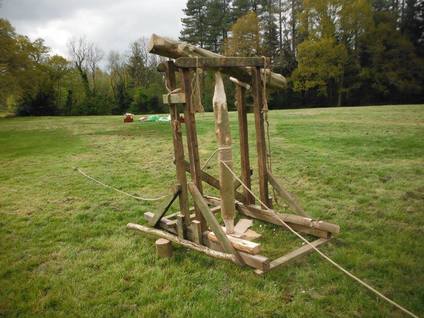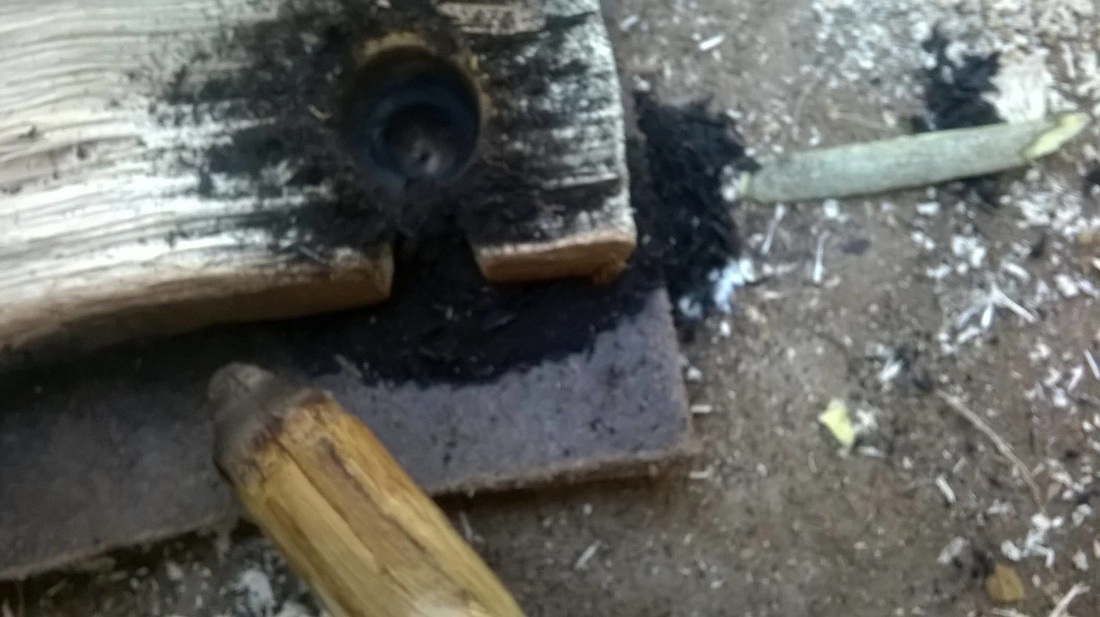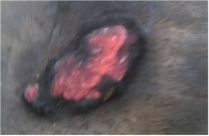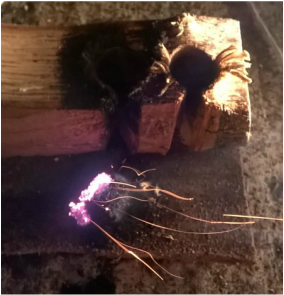|
Please also see the Neid Fire section  An artists impression of the Force Fire method - this is of Russian Origin depicting the Slavic Sacred Live Fire ritual similar to the Celtic Tein'-éigin. image appears in the book "We Are Slavs" by Maria Semyonova. From Wikimedia Commons. An artists impression of the Force Fire method - this is of Russian Origin depicting the Slavic Sacred Live Fire ritual similar to the Celtic Tein'-éigin. image appears in the book "We Are Slavs" by Maria Semyonova. From Wikimedia Commons. Updated Oct 2018. As the end of October is approaching, I thought I would share a piece about Samhain (Samhuinn) and the Samhain fires and in particular Force Fire \ Neid Fire \ Tein'-éigin - which was a traditional way of lighting a new sacred pure fire, at this time (and at Beltaine.) "Samhain is the Gaelic \ Celtic festival seen to mark the end of the harvest season and the beginning of winter or the "darker half" of the year, celebrated from the very beginning of one Celtic day to its end, or in the modern calendar, from sunset on 31 October to sunset on 1 November, this places it about halfway between the Autumn equinox and the Winter solstice" taken from wikipedia. "The 31st is the modern calendar date for Samhuinn. In old calendar times Samhuinn would be around the 11th of November, now Martinmas. Although in reality, it would have been when the moon was dark or other calendar event such as the first frost or when the harvest was in. The date wouldn’t have been set. Banks suggest that the eve of Samhuinn was moonless and in these northern regions, dark, as befitted the “season of innumerable mystic rites” mentioned by Carmichael (which backs up the idea of a dark moon). " from Cailleachs Herbarium. Samhain is also seen as a time to remember and honour the ancestors. "Samhain is believed to have Celtic pagan origins and there is evidence it has been an important date since ancient times. Some Neolithic passage tombs in Ireland are aligned with the sunrise around the time of Samhain. It is mentioned in some of the earliest Irish literature and many important events in Irish mythology happen or begin on Samhain. It was also the time when cattle were brought back down from the summer pastures and when livestock were slaughtered for the winter." taken from wikipedia. Fires were traditionally lit at Samhain (and Beltane) and it is thought that all other fires were extinguished and people lit their hearth fires from the new “pure” fire . There would be much symbology attached to this - to mark the passing into Winter, to burn the old away and welcome the new etc. It is believed that the traditional way of lighting the Samhain\Beltane fires was through a friction fire method known as Force Fire / Neid Fire / Tein'-éigin (as described by 17th,18th and 19th century writers such as Sir James Frazer.) This method was seen to be a sacred and ritual way of lighting fires to produce a new “Pure” fire. It is also written that seasoned Oak was used due to it’s sacredness (Sir James Frazer Golden Bough.)
The auger\spindle would be placed vertically between the cross bar and hearth . The auger needs to be carved as straight as possible and be placed as vertical as possible. A long heavy rope would be tightly wrapped several times around the middle of the auger (it would help to carve a narrower section in the middle so the rope doesn’t move up or down the auger) with an end of the rope on opposite sides and this would be pulled with force and speed in turns by a group at each end of the rope to create friction. The rope would need to be kept tight at all times. The weight of the large auger and heavy cross-bar produce enough downward pressure needed to create the friction, for extra pressure weights could be added to the cross bar. As the auger reduces in height due to friction the cross bar would need to be pulled downwards. Making a full size Force Fire churn requires much effort and time, and operating a Fire Churn involves many people to pull on the ropes to produce an ember and especially with Oak, but ritual is not about speed or efficiency and theatrics does have it's place in ritual! And actually, these devices work beautifully well. According to some folklore nine nines of first begotten son’s were required to pull the rope to “churn” the auger into the hearth log! If you wish to light your fire in a ritual way, I would suggest to try a friction method (e.g. bow drill) and try not using modern lighters\fire lighters (unless necessary) and to try to do it with intention and awareness. See the page Sacred Fire for more information on suggestions of welcoming fire in a sacred and ritual way. Descriptions I’ve read say that this method, produced fierce sparks and “forced” a fire, but I feel this is an over dramatization (Oak doesn’t have the properties to burst into flame in this way!) but there would have been much smoke ( and in reality it would hopefully have created a very large ember which could then be used to light the new pure fire. Once lit ,the pure fire would be kept going until the end of the ritual. Other fires in prominent places may also have been lit from this fire, and people would then light their home hearth fire from the "pure" fire. Some people may question whether Oak was used, but I have proved that Oak does work with the bow drill. The Force Fire apparatus was also used throughout Europe and Russia by the Celts and Slavs. More information can be found on my Fire Churn page here.
English Oak was seen to be sacred by both the ancient Celts and Slavs and used to light fires ritually within ceremonies (e.g. Beltaine, Samhain) at at times of distress. Even though Oak is a hard wood, it is possible to tempt an Ember using Oak with the Bow Drill. You need to ensure that the Oak is very dry and it may take some time to get used to using it, and it doesn't always work. You do need to apply as much downward pressure as possible, as Oak polishes easily. Here is a short film clip demonstrating Oak on Oak. I’ve been lured by folklore that the mighty sacred Oak was used to kindle fire through friction. Sir James Fraser mentions Oak quite a few times in the Golden Bough. I always thought Oak would be too hard a wood to tempt fire out through friction, so I wanted to test the folklore to see if Oak could be used especially for ritual/ceremonial fire. I sourced some dead English Oak (approx 6 months old) from the local woods and was getting lots of smoke and black dust when using Oak on Oak with the bow drill but not an ember. I then tried a Hazel spindle and managed to tempt an ember.
I then doubted that it was Oak as the general rule in bushcraft is that hard woods aren't really suited to friction fire and Oak doesn't appear on the list of recommended woods. So I did a bit more homework, re-visited the fallen branch, double checked the bark, buds etc and confirmed it was Oak. I then attempted an ember again, and finally achieved an ember using Hazel on Oak. Not an obvious combination but I tried Hazel as Hazel works on a range of woods. It wasn't easy, and I found that Oak doesn't like being damp (unlike some other woods), as it had got damp in the shed. After drying the Oak out for a couple of hours I tried again and after a few minutes of bow drilling tempted out the ember, Then a few days later I tried again., by carving a spindle out of a larger piece of Oak and eventually achieved an ember. I drilled through to the bottom of the hearth, so then took the pressure off and drilled fast and the friction ignited the pile of dust. and created an ember A day later I tried again and achieved an ember, much quicker and easier within a couple of minutes! So Oak is possible, but it does need to be seasoned and dry, and may take several attempts at first. I found it easier carving a spindle from a larger piece fromm than trying to use thinner branches - which tend to be not very straight! Oak does give a good strong ember though which lasts a while. I’ve quoted a couple of different references to the use of Oak from The Golden Bough below. ( I've also seen references to Laurel and Ivy being used in Ancient Greece – another one for the to-do list.) “The chief diety of the Lithuanians was Perkunas, the god of Thunder and Lightning, whose resemblance to Zeus and Jupiter has often been pointed out. Oaks were sacred to him, and when they were cut down the people loudly complained that their sylvian dieties were destroyed. Perpetual fires kindled with the wood of certain oaks-trees were kept up in honour of Perkunas, and if such a fire went out, it was lighted again by friction of the sacred wood.” Of Teign-eign (Force Fire) … ….”The most primitive method seems to be that used in the islands of Skye, Mull and Tiree…A well seasoned plank of oak was procured, in the midst of which a hole was bored. A wimble of the same timber was then then applied, the end of which they fitted in the hole….They used a frame of green wood, of a square form, in the centre of which was an axle tree or wimble. In some places three times three persons, in others three times nine, were required for turning round by turns the axle-tree. (This describes the devices which I have written about here…. .http://www.bowdrillian.co.uk/blog/need-fire ... another future project ....) |
Archives
January 2024
Categories
All
|






 RSS Feed
RSS Feed